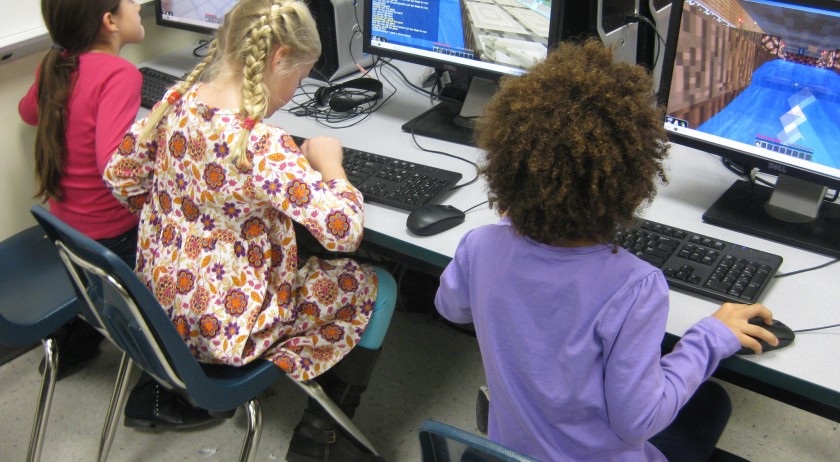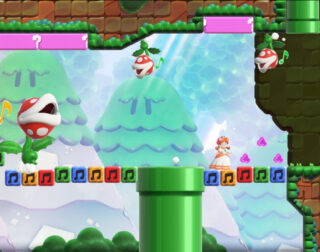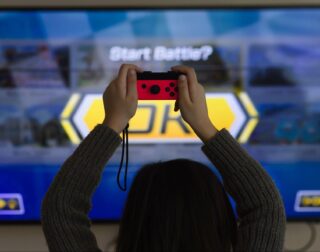Do you know a kid who can’t stop playing Minecraft? This problem isn’t rare.
Kids can play Minecraft for hours on end and never seem to reach an endpoint to the game, which is part of what they love about it. Minecraft is a sandbox game with a large open world that allows players to do practically anything they desire. Sandbox games foster exploration, creativity, and the satisfaction of personal achievement that stems from the fact that there is not a single approach or specific goal that defines “winning.” And with no definitive beginning or end, players can keep accomplishing new and different personal goals to their hearts’ content. Of course it is difficult to stop playing!
If you have a child who tends toward over-engagement or struggles to transition from one activity to another, Minecraft can become more of a curse than a blessing. While it offers fantastic opportunities for learning science, history, math, physics social/emotional, and executive functioning skills, Minecraft can become a singular focus for some kids, preventing them from achieving balance in their recreational activities. Sandbox games in general lend themselves to immersion and over-involvement, but Minecraft even more so. Its ease of getting started, lack of rules, and opportunities for expression and discovery make it particularly addictive.
These game qualities can be especially problematic for children affected by Autism who struggle with transitions and engage in repetitive behaviors. Minecraft can become a means of escape that facilitates a withdrawal into a fantasy world where the player is in ultimate control. As a result, Minecraft can be so absorbing that a child affected by Autism can struggle to disengage from the game.
Kids with ADHD can also experience difficulties with transitions, display oppositional behaviors, and become overly focused in something that engages their attention. Minecraft offers an ever-changing landscape and the type of immediate feedback from building stuff that makes using LEGOs such a popular form of traditional play for kids with ADHD. Minecraft also offers an ongoing experience of positive feedback, an accumulation of tangible accomplishments that many kids with ADHD do not experience in school, furthering its appeal.
Because of these legitimate concerns about excessive Minecraft play among kids with Autism and ADHD, parents and educators may need to set limits on Minecraft play. Here are some strategies that can help:
1. Create a regular Minecraft schedule. Let a child play Minecraft during specified times and keep to it. Be generous with the amount of time on weekends or holiday — up to 2 or 3 hours. On school days, try to be consistent about the time of day Minecraft is to be played, and keep gameplay under 90 minutes. It may help to have a discussion about appropriate limits.
2. Don’t argue about Minecraft. If a child becomes oppositional about getting off the game, have a clearly stated plan (that is written and he understands) that will result in losing his Minecraft privileges the following day. Don’t be super rigid. It’s OK to give a 5 minute warning and allow for a few minutes to shut down.
3. Understand the reasons for the obsessive interest in Minecraft. Talk to your child about why she loves the game so much so she’ll feel understood. Tell her that she needs to do other things in order to have a more balanced and healthy life. Then make sure you are modeling that type of balance in your own leisure and work activities.
4. Find substitute games. Select games that have some of Minecraft’s qualities but are less addictive. Video games such as Blockheads and Roblox are great choices. Legos and Rokenbok construction toys can also be a good substitute.
5. Play Minecraft together. You can use a multi-player version of Minecraft by locating and connecting to the IP address of a multiplayer server, or opening your home or local area network (LAN) to other computers who are also connected to that network. Or, you can work on a project on the same screen with a child. This type of experience will help you to learn Minecraft and facilitate the use of communication, social, and executive functioning skills. It will also make it easier to let your child know it’s time to move on to something else.







We are stuck between “force never works” and using rewards (which are really force in reverse.) Kids hate schedules, and have a difficult time taking up time during the day when there is no school or camp.
We have found that nothing works. Our 12 yr. old spends from 8 to 12 hrs. a day on computer screens. The games vary. It’s difficult getting him to get out of the house with all the rain we’re having.
You need to come up with other solutions.
It can be tough to eliminate the games, but probably better to do it now than later. Using a tool to shut off the home Internet and owning the technology yourself, may be a good first option.
I wouldn’t recommend using Roblox, it is even more addictive and filled with advertisements.
Amen…if you find away …let us know. My 14 yr old grandson is addicted to mine craft.
Hi Joan, here are some articles from our archives about video game addiction in general as well as Minecraft addiction specifically. If your grandson’s preference for Minecraft isn’t actually addiction, this article about setting limits on Minecraft might help. If all else fails, and app like Screen Time might be the way to go.
This is such a great post and parents really need to keep an eye on their children and the time they spend playing games. My son is addicted to Minecraft too. I definitely think that there has to be parental control app to protect kids from such addiction. My family uses Kidslox (www.kidslox.com). It restricts the time of the use of his mobile phone. My son can play games just an hour a day and I am very satisfied with this app. I see that my kid is less nervous now and play more with his friends outside.